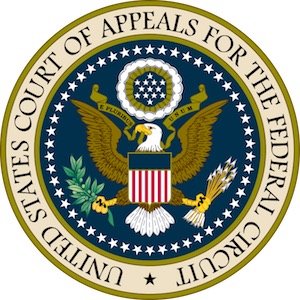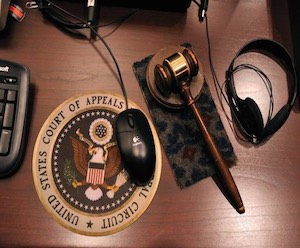Not a lot closer to understanding when software is patent eligible
“There should be no serious question that computer-implemented inventions such as software constitute patent-eligible subject matter under § 101,” Paul Clement wrote in a brief filed on behalf of IBM to the Supreme Court in 2014. Ultimately, the IBM brief would argue that the abstract idea doctrine is unworkable, which it is. Sadly, nearly 30 months after the Supreme Court’s landmark decision in Alice v. CLS Bank we are not a lot closer to having a working understanding about when and under what circumstances software is patent eligible.
Yes, the Federal Circuit has started to issue rulings that give hope, but they also then issue non-precedential rulings that seem to just string together buzzwords too. They also continue to allow the invalidation of patent claims without a claim construction, which is antithetical to pretty much the whole of patent law. See No claim construction, CAFC rules claims ineligible.
USPTO instructs examiners on patent eligibility cases
 The United States Patent and Trademark Office recently issued a new memorandum to patent examiners on recent software patent eligibility decisions from the Federal Circuit. The memo sent to patent examiners provides discussion of McRo, Inc. v. Bandai Namco Games America and BASCOM Global Internet Services v. AT&T Mobility.
The United States Patent and Trademark Office recently issued a new memorandum to patent examiners on recent software patent eligibility decisions from the Federal Circuit. The memo sent to patent examiners provides discussion of McRo, Inc. v. Bandai Namco Games America and BASCOM Global Internet Services v. AT&T Mobility.
The PTO acknowledges in the memo that the Federal Circuit even more recently issued another precedential decision in Amdocs (Israel) Ltd. v. Openet Telecom, which will be discussed in forthcoming subject matter eligibility guidance. For more on that case, please see Software eligible because it recites technical solution to technical problem.
11.22.16 | patent eligibility, USPTO | Gene Quinn
Alice Experts and the Return of Second Pair of Eyes to the PTO
 “I have not yet run into an Art Unit that does not have someone designated as an Alice expert,” explained JiNan Glasgow of Neopatents. “They won’t always tell you who it is, but they all say they have an Alice expert.”
“I have not yet run into an Art Unit that does not have someone designated as an Alice expert,” explained JiNan Glasgow of Neopatents. “They won’t always tell you who it is, but they all say they have an Alice expert.”
While discussing the importance of doing interviews in every single case, Glasgow explained that although it is not something that has been generally publicly disclosed by the Patent Office, “in every art unit examiners confirm that there is an examiner within the Art Unit who is the Alice expert and that examiners have said that even if they are ready to allow a case, nothing can be allowed without the approval of that Alice expert.” This applies to TC 3600 and beyond, according to Glasgow.
If what examiner after examiner has told Glasgow is correct, this means there is essentially a return to the so-called “second pair of eyes” review at the Patent Office.
08.18.16 | patent eligibility, Patent Issues, Patent Prosecution, USPTO | Gene Quinn
Federal Circuit finds another software patent claim eligible
 Recently, the United States Court of Appeals for the Federal Circuit issued a decision in BASCOM Global Internet Services, Inc. v. AT&T Mobility LLC. Writing the opinion for the majority was Judge Raymond Chen, who also authored the Court’s decision in DDR Holdings, which is one of the few cases to similarly find software patent claims to be patent eligible. Joining Chen on the panel were Judges O’Malley and Newman, with Judge Newman concurring and writing separately.
Recently, the United States Court of Appeals for the Federal Circuit issued a decision in BASCOM Global Internet Services, Inc. v. AT&T Mobility LLC. Writing the opinion for the majority was Judge Raymond Chen, who also authored the Court’s decision in DDR Holdings, which is one of the few cases to similarly find software patent claims to be patent eligible. Joining Chen on the panel were Judges O’Malley and Newman, with Judge Newman concurring and writing separately.
In this case, the Federal Circuit agreed with the district court that the filtering of content is an abstract idea because “it is a long-standing, well-known method of organizing human behavior, similar to concepts previously found to be abstract.” However, the Federal Circuit ruled that the claims did add significantly more and, therefore, the claims are patent eligible.
07.29.16 | patent eligibility, Patent Issues, software patents | Gene Quinn
Patent Eligibility Relief for the Life Sciences Sector
 Several weeks ago, the United States Court of Appeals for the Federal Circuit issued a decision in Rapid Litigation Management LTD v. Cellzdirect, Inc. The patent owner appealed the decision of the district court, which had concluded that claims of U.S. Patent No. 7,604,929 were patent ineligible under the “law of nature” doctrine. The unanimous Federal Circuit panel, which was made up of Chief Judge Prost (writing for the majority), Judge Moore and Judge Stoll, vacated and remanded the case for further proceedings. The Federal Circuit ruled that the ‘929 patent claims in question were not directed to a patent-ineligible concept.
Several weeks ago, the United States Court of Appeals for the Federal Circuit issued a decision in Rapid Litigation Management LTD v. Cellzdirect, Inc. The patent owner appealed the decision of the district court, which had concluded that claims of U.S. Patent No. 7,604,929 were patent ineligible under the “law of nature” doctrine. The unanimous Federal Circuit panel, which was made up of Chief Judge Prost (writing for the majority), Judge Moore and Judge Stoll, vacated and remanded the case for further proceedings. The Federal Circuit ruled that the ‘929 patent claims in question were not directed to a patent-ineligible concept.
This decision could well mark a significant turning point and give real relief to innovators in the life sciences arena. Up until now, the Federal Circuit has avoided a narrow reading of the Supreme Court’s recent precedents in Mayo v. Prometheus and AMP v. Myriad Genetics. It is difficult to know exactly why that has been the case, but one strong possibility is that the Federal Circuit was looking to the Supreme Court to clarify and narrow the expansive language that they used in Mayo and Myriad.
07.28.16 | Biotech, Federal Circuit Cases, patent eligibility, Patent Issues, posts | Gene Quinn


No Comments
11.29.16 | Patent Issues | Gene Quinn